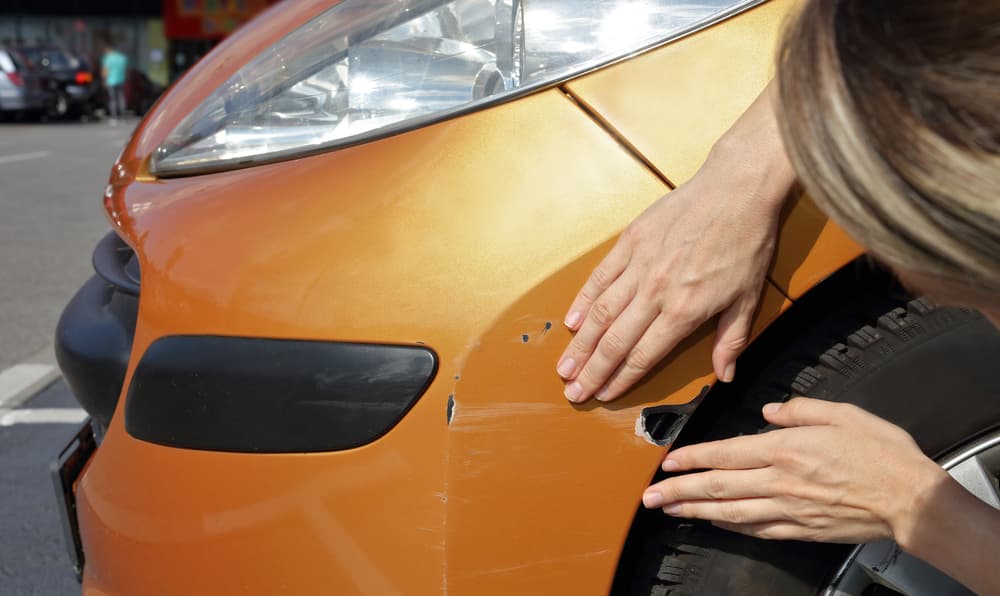Someone Hit My Car and Drove Off. What Can I Do?

Car Accidents

If you have been the victim of someone hitting your car and leaving the scene, we can help. The car accident lawyers at TK Injury Lawyers will work directly with you to hold any negligent or reckless party accountable.
When is an Accident Considered a Hit-and-Run?
An accident is considered to be a “hit-and-run” when a vehicle operator strikes another vehicle, person, or object and immediately vacates the scene.
In a hit-and-run, the perpetrator will leave the accident scene without contacting the proper authorities or providing insurance information.
In a hit-and-run with an object, a motorist may hit a structure, fixture, or highway landscaping. Telephone poles, trees, and mailboxes all fall into this category.
No matter the specific circumstances, a person violates the law any time he or she flees the scene of an accident.
What is Texas Law on Hit-and-Run Accidents?
According to the Texas Transportation Code § 550.021, in either an accident involving bodily injury or death, the liable party must take the following actions:
- Immediately stop the vehicle at the scene of the accident or as close to the scene as possible;
- Immediately return to the scene of the accident if the vehicle is not stopped at the scene of the accident;
- Immediately determine whether a person is involved in the accident, and if a person is involved in the accident, whether that person requires medical treatment;
- Remain at the scene of the accident and give his or her name, address, vehicle registration, and insurance information;
- If anyone was injured, call 911 and provide reasonable medical assistance or transportation upon request.
In an accident involving damage to a vehicle, the same steps must be taken. If the accident took place on a main road, freeway, shoulder, or ramp, and both vehicles can still be safely driven, the operators should move their cars to a safer area.
Under the same law, a person who damages an unattended vehicle must stop and provide his or her name and address to the owner of the vehicle.
If the owner cannot be located, the person who struck the vehicle must leave a written note, including their name and address and detailing the circumstances of the collision.
What Are My Next Steps?
If someone hit your vehicle and drove off, you should take the following steps:
- Take a moment to make sure everyone is safe
- Contact the police
- Write down any details you gathered about the other vehicle, including the car’s make, model, and year
- Notify your insurance company about the accident
- If there were witnesses, ask if they will testify on what they saw
- Take photos of the scene, trying to capture any identifying signs at an intersection and capture any skid marks or other clues suggesting how the accident took place
What are the Penalties for Violating the Law?
A motorist who disobeys the law and has been involved in an accident resulting in bodily injury or death has committed a felony.
If anybody has died, then the act is a second-degree felony. The non-compliant party could face anywhere between two to 20 years in prison.
If anybody is injured, then the act is a third-degree felony. Although a less serious offense, the non-compliant party could still face between two to 10 years in prison.
If a person does not comply with the law and has been involved in an accident resulting in vehicle damage, the individual has committed a misdemeanor. The amount of damage will determine the severity of the crime.
For instance, if there is less than $200 in repairs for all vehicles, then the noncompliant party would be charged with a Class C misdemeanor. A Class C misdemeanor can result in a fine of up to $500 but no jail time.
If there is more than $200 in damage, then the noncompliant party would be charged with a Class B misdemeanor. This can result in a maximum of 180 days in jail and/or a fine of up to $2,000.
Can I Sue the Other Driver for Compensatory Damages?
If you are able to locate the other driver, then you can make a claim with their insurance company.
If they do not have enough coverage, you may be able to file a lawsuit. This could help cover any compensatory damages. Compensatory damages would include any actual losses you suffered.
There are two kinds of compensatory damages: special and general damages.
Special damages are specific expenses that are easily quantifiable. These include:
- Vehicle damage and repairs
- Medical bills
- Lost wages
- Lost earning potential
- Property damage
General damages are losses that affect a person’s quality of life but do not have a specific price tag associated with them. These include:
- Pain and suffering
- Loss of companionship
- Loss of enjoyment of life
- Loss of consortium
- Disfigurement
What If the Other Driver Cannot Be Found?
In an accident in which the other driver bolts, you most likely did not exchange insurance information.
In these situations, you can use your own insurance carrier to pay for damages through your uninsured motorist coverage (“UM/UIM insurance.”). This will cover your expenses when the other driver is at-fault but has fled the scene. It is also used in situations where the other motorist does not have enough liability insurance or no coverage.
Anyone who drives should have UM/UIM insurance. It is recommended that you carry enough property damage coverage to cover the cost of replacing your vehicle.
A Car Accident Attorney Serving You
You can be blindsided by another driver hitting your vehicle and immediately driving off. Don’t let those responsible for your suffering get away with it. Contact TK Injury Lawyers today to schedule your free consultation.





